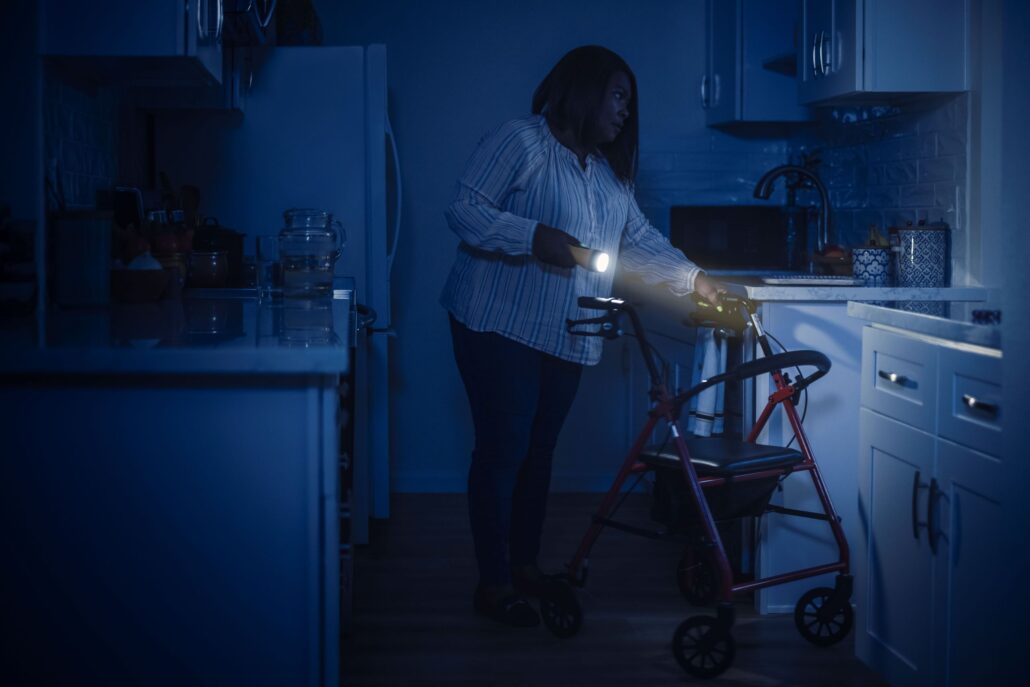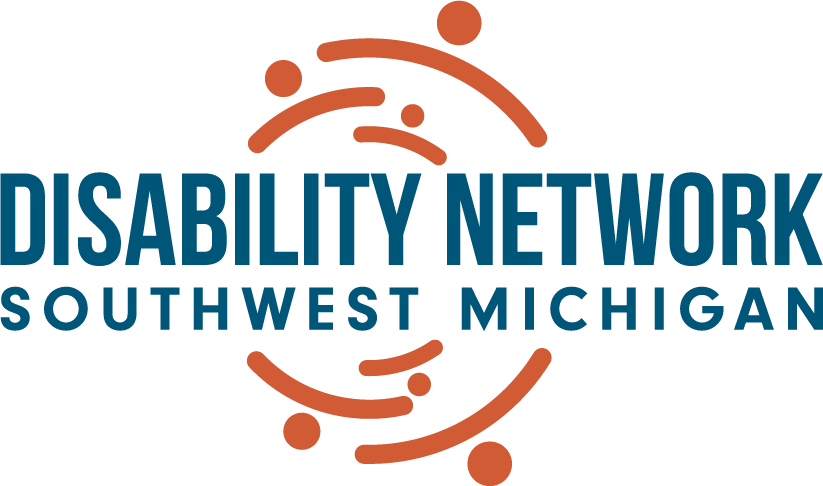
It’s true what they say – “You never know when disaster is going to hit,” and, unfortunately, the frequency of severe storms, wildfires, floods and other natural disasters is on the rise. Under the Americans with Disabilities Act (ADA), people with disabilities have a civil right to effective communication and equal access to emergency information, shelters, programs, and services, yet, according to the United Nations Department of Economic & Social Affairs, people with disabilities are 2 to 4 times more likely to be injured or killed in a disaster than people without disabilities.
Every organizations’ emergency preparedness plan should specifically address the needs of people with disabilities but this is often overlooked. Many people with disabilities have considered what their needs are in their homes and what they would need to do in an emergency. But what if they’re not at home? All places of public accommodation should have an emergency plan in place that includes people with disabilities – this encompasses places of business, entertainment venues, hotels, hospitals, restaurants – everywhere people are, there may be people with disabilities and their needs often require specific planning.
Consider something as simple as the electricity going out during a storm. For a person with a mobility disability, if the elevator isn’t working this might mean they are trapped on an upper floor of a building. For someone who uses a battery-operated device, such as a ventilator, they have no way to recharge their batteries. Or in the event a fire alarm goes off, someone with a sensory disability may be triggered into a panic. When these things happen, it’s too late to make a plan – the plan needs to be in place and ready to be executed.
On a larger scale, communities also need to have a disaster response and recovery plan in place that takes into consideration the needs of people with varying disabilities. This includes properly trained public safety personnel as well as an evacuation plan that will accommodate everyone. Public announcements need to be available utilizing all communication methods. Shelters are required to be accessible but that doesn’t mean they all are. Some people with disabilities cannot be separated from their life-sustaining equipment, or their service animal or caregiver – policies must be in place to accommodate these needs. Access to needed medications is another important consideration – many people can’t survive without them.
Unfortunately, marginalized communities where more disabled, lower income, and people of color live are more vulnerable to disasters because their neighborhoods are typically not well maintained and lack the safety net systems that exist in more affluent neighborhoods.
On a systemic level, the impact of poor emergency planning for people with disabilities is grim. When forced to make a quick decision about who is rescued first, too frequently people with disabilities get put at the bottom of the list. Those who do reach safety are often shuffled off to nursing facilities because the shelters are not prepared to accommodate them – once admitted, it can be difficult to be released when the danger has passed. Sometimes people need to leave their state to stay with family or friends which jeopardizes healthcare services they may receive through Medicaid.
Ground work has been laid
Fortunately, some ground work has been laid to improve disaster planning for people with disabilities. In August 2021, two bills that address the situation were introduced in the U.S. Senate and the House of Representatives. They are the Real Emergency Access for Aging and Disability Inclusion (REAADI) for Disasters Act (S.2658 /H.R.4938) and the Disaster Relief Medicaid Act (DRMA) (S.2646 /H.R.4937).
The REAADI for Disasters Act requires more people with disabilities to be included in disaster response planning; provides training centers to help local and state governments implement best practices to better meet the needs of aging and disabled members of their communities in a time of disaster; and calls for a study to evaluate if money has been spent on disasters in compliance with disability laws.
The DRMA establishes a new category for Medicaid-eligible people (Relief-Eligible Survivors) who would keep their Medicaid services if they need to move out-of-state due to a disaster and provides aid to states to support the needs of Relief-Eligible Survivors. Additionally, this bill implements a grant to help states create an “emergency response corps” to provide home and community-based services to Relief-Eligible Survivors.
Since the introduction of these bills into Congress, no significant action has been taken; they are stalled in various congressional committees. Let’s not let the forward progress die here. We are fortunate to have Michigan legislators on several committees involved. The National Council on Independent Living (NCIL) published a Disability Equity During Disaster Tool Kit which contains sample letters and phone dialogue you can use/modify for your own use when communicating with your elected officials.
- The Senate version of the REAADI for Disasters Act (S. 2658) is currently in the Senate Committee on Homeland Security and Governmental Affairs, which is chaired by Senator Gary Peters of Michigan. Contact Senator Peters and ask him to pass this bill through committee so it can be brought to the full Senate for a vote.
- The House version of the REAADI for Disasters Act (H.R. 4938) is currently being considered by multiple House committees: Transportation and Infrastructure, Education and Labor, and Energy and Commerce. The House Committee on Transportation and Infrastructure does not include any representatives from Michigan. The following representatives from Michigan serve on the House Committee on Education and Labor: Rep. Andy Levin, Rep. Haley Stevens, Rep. Tim Walberg, and Rep. Lisa McClain. The House Committee on Energy and Commerce includes the following representatives from Michigan: Rep. Debbie Dingell, Rep. Fred Upton, and Rep. Tim Walberg. If your representative is on one of these committees, ask them to support the REAADI for Disasters Act (H.R. 4938).
- The Senate version of the DRMA (S. 2646) is currently in the Senate Committee on Finance, whose membership includes Senator Debbie Stabenow of Michigan. Contact Senator Stabenow and ask her to support this bill’s passage through committee so it can be voted upon by the full Senate.
- The House version of the DRMA (H.R. 4937) is currently being considered by the aforementioned House Committee on Energy and Commerce and the House Ways and Means Subcommittee on Health. The Ways and Means Subcommittee on Health doesn’t include any representatives from Michigan, but if your representative is on the Energy and Commerce committee, ask them to support the DRMA (H.R. 4937) as well.
Ways You Can DARE to Impact Change:
Get involved today, whether it’s on a local, state, or federal level. When emergency management includes people with disabilities in the planning process, there will be better outcomes.
- Contact the U.S. Senators and Representative mentioned above (links on the right of this page) to encourage action on Real Emergency Access for Aging and Disability Inclusion (REAADI) for Disasters Act (S. 2658 / H.R. 4938) and the Disaster Relief Medicaid Act (DRMA) (S. 2646 / H.R. 4937). NCIL’s Disability Equity During Disaster Tool Kit contains sample letters and phone dialogue.
- Connect with your county emergency management office and local Red Cross chapter to advocate for inclusion in your community.
- If you are business owner or manager of a public facility, review the emergency response plan to ensure it specifically includes people with disabilities.
- Donate blood any time! Currently, our country is experiencing a severe blood shortage. Blood supplies are critical for survival when disaster strikes an area. Find a blood drive near you at the Red Cross.
Learn More About the Topic:
- Video: Right to Be Rescued (15:19)
- Article: Making emergency preparedness inclusive for people with disabilities
- Article: Five actions for disability-inclusive disaster risk management
- Article: Climate Change Solutions Must Include People with Disabilities
- Article: Three Questions about Inclusive Emergency Preparedness for People with Disabilities
Note: This article was written for our DARE to Impact Change publication which provides Disability Advocacy, Rights & Education. Follow this link for more info and to subscribe to our DARE to Impact Change e-publication.
